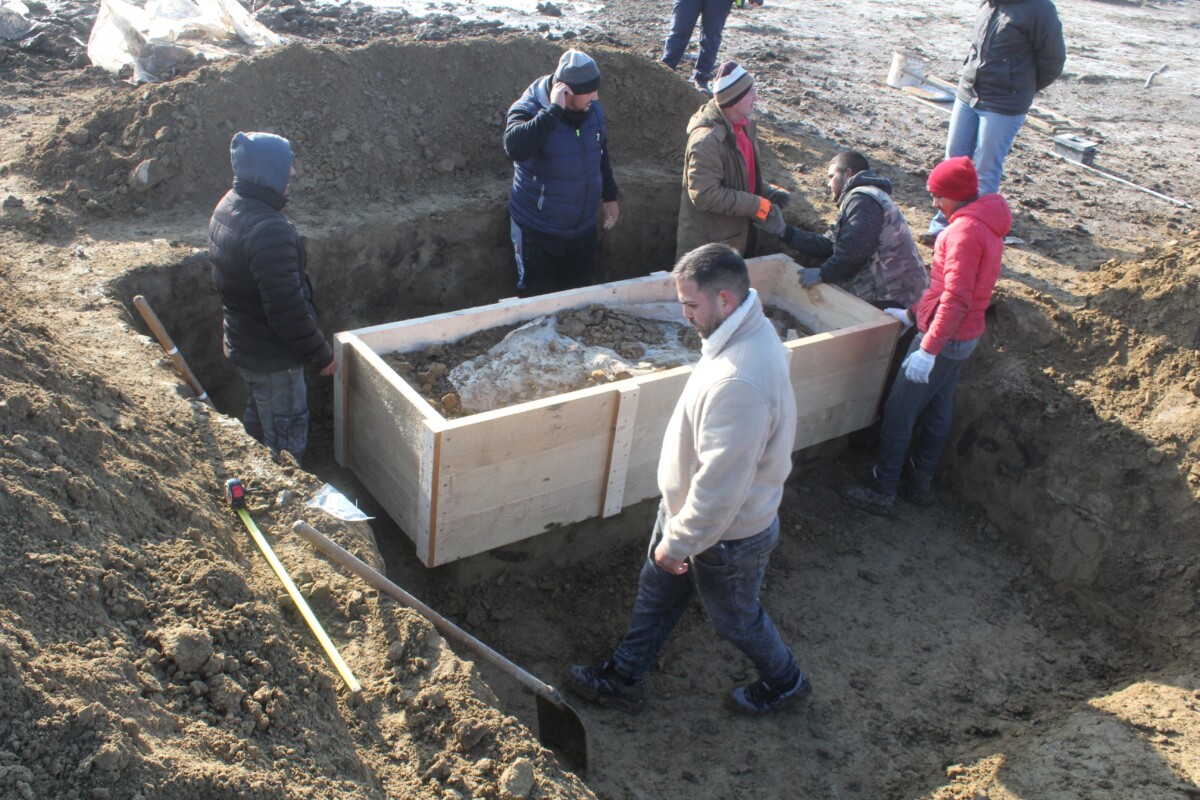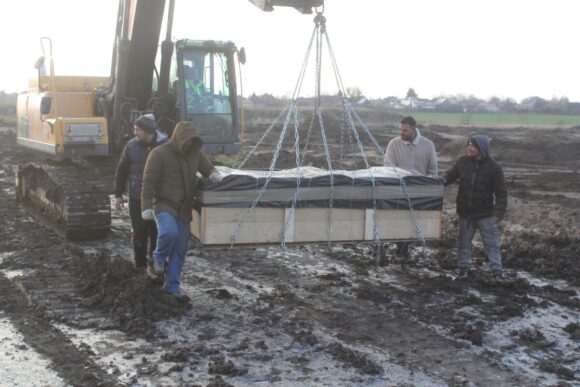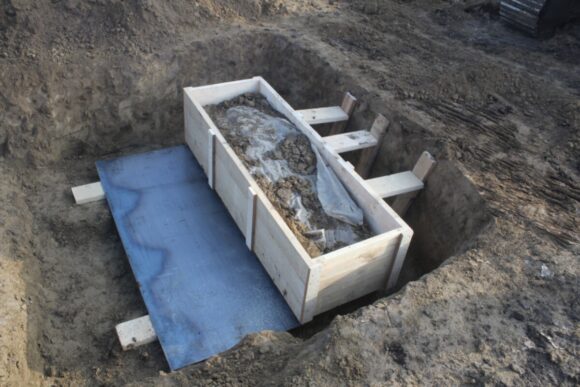The archaeologists of the Déri Museum in Debrecen found the grave of a fully armed Avar warrior on the border of Ebes in November of last year, the details of the find are currently being revealed by the specialists.
It was written that a complete lamellar armor was found in the solitary early Avar grave and that the warrior’s horse was also buried above the relatively shallow grave. Beneath the horse, spread out over the deceased, the armor was found, on which the warrior’s wooden open quiver with its arrows, as well as his bow and sword, was placed.
The importance of the tomb is given by the armor inside it, which – after the discovery in Derecske in 2017 – is the second piece of lamellar blood that can probably be said to be complete and was found in a relatively intact state during an archaeological excavation. As a result, except for the horse bones, the entire group of finds was removed in one block by specialists and is currently being dismantled and documented in the restoration workshop. All of this makes it possible to interpret and reconstruct the structure of the armor and can provide additional data on the lamellar armor of the Avar period, they said.
At the same time, dismantling the assemblage in the workshop enables the detection and examination of phenomena, such as organic remains, which would not be possible under field conditions.
It was highlighted that lamellar armor was an important part of the equipment of the Avar heavy cavalry. A few fragments and a few connected pieces of several types of armor made of small iron plates are usually found in the graves. Those graves where the number of lamellae found in them indicates complete armour, were affected by contemporary or modern disturbances.
“That’s why the grave of a warrior who lived at the beginning of the 7th century, found during the archaeological excavation of the M35 highway in the spring of 2017, on the southwestern border of Derecske, was special,”
– says the statement, according to which the armor spread under the man – also takes into account European armor finds of the same age taking – the first lamellar blood, which can be said to be complete, was discovered by a specialist and was not removed in a disturbed state, but in its original position.
The significance of the find in Derecske is shown by the fact that the museum’s treasures were also visible in Austria (Schallaburg) and then in Germany (Halle) at exhibitions presenting equestrian nomads organized in recent years.
At the same time, these armors were tailored to the individual, they were not uniform: they could be made of plates of different sizes, shapes, and numbers, with different lacing methods, and could consist of a different number of rows, so the more complete or nearly complete armor finds in intact condition, the more complete a picture we can get not only of the about armor but also about the Avar heavy cavalry.
This is why the horse grave recently found in Ebes is of great importance. The examination has already begun, currently, the armor and weapons are visible on the body, but as the restoration progresses, additional valuable artifacts may be found, the document states.
The archaeologists, since they came across the find in November, on Rufus Day, gave this name to the warrior who lived in the early Avar period, probably in the first half of the 7th century.
(MTI)
Photos: Déri Museum




















